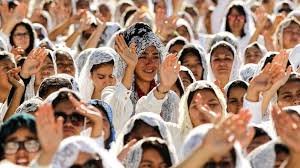
Understanding the Concept of the Human Gathering Cult
The term human gathering cut often sparks intrigue and speculation. It evokes images of secretive groups, mysterious rituals, and shared beliefs that unite individuals under a common purpose. While the concept might seem shrouded in enigma, it is rooted in human history and psychology. This article delves into the essence of the human gathering cut, its characteristics, societal impact, and why such phenomena captivate our collective imagination.
Table of Contents
Origins and Historical Background of the Human Gathering Cult
Throughout history, humans have sought connection and meaning, often forming groups with shared ideologies. The human gathering cut is no exception. These groups often arise during periods of societal upheaval or uncertainty, offering members a sense of belonging and purpose. Examples can be traced back to ancient civilizations, where mystery cults like those of Eleusis and Mithraism provided spiritual solace and secret rites.
In medieval times, secret societies such as the Freemasons and Rosicrucians emerged, blending esoteric knowledge with communal gatherings. These historical precedents lay the groundwork for modern interpretations of the human gathering cut, demonstrating its deep-seated roots in the human psyche.
Key Characteristics of the Human Gathering Cult
To understand the human gathering cut, it is essential to identify its defining traits:
- Shared Beliefs: Central to any human gathering cut is a core set of beliefs or doctrines that bind members together. These beliefs often promise enlightenment, salvation, or a higher purpose.
- Charismatic Leadership: Many such groups are led by a charismatic figure who inspires devotion and loyalty. This leader often serves as the face of the cult and a symbol of its ideals.
- Rituals and Symbols: Rituals play a significant role in reinforcing group identity and commitment. Symbols, chants, and ceremonies are common features of the human gathering cut.
- Sense of Exclusivity: Membership in a human gathering cut often involves initiation rites or strict entry requirements, creating a sense of exclusivity and privilege among members.
Psychological Appeal of the Human Gathering Cult

The allure of the human gathering cult lies in its ability to fulfill deep psychological needs. Humans are inherently social creatures, craving connection and understanding. Cults provide a structured environment where members feel seen, valued, and understood. For some, joining a human gathering cult offers:
- Belonging: In a fragmented world, these groups offer a close-knit community.
- Purpose: Members often find meaning in the cult’s mission or teachings.
- Identity: Being part of a human gathering cult gives individuals a clear sense of self and a role within the group.
Modern Manifestations of the Human Gathering Cult
While the term “cult” often carries negative connotations, modern-day human gathering cults can take diverse forms. Some are benign and focus on personal growth or spirituality, while others may veer toward manipulation and control. Examples include:
- Self-Help Groups: Some organizations blur the lines between self-improvement communities and cult-like structures, using charismatic leaders and exclusive teachings to attract followers.
- Fan Communities: Intense fandoms around celebrities, influencers, or pop culture phenomena can exhibit cult-like behavior, with rituals, jargon, and a shared sense of identity.
- Tech and Startup Cultures: In Silicon Valley, the intense devotion to visionary leaders and disruptive ideals sometimes mirrors the dynamics of a human gathering cult.
Ethical Concerns Surrounding the Human Gathering Cult
While some human gathering cults provide support and inspiration, others exploit their members. Ethical concerns include:
- Manipulation: Leaders may use psychological tactics to control members, eroding their autonomy.
- Financial Exploitation: Members might be pressured to donate large sums of money or resources.
- Isolation: Cults can isolate members from their families and friends, deepening dependence on the group.
- Emotional Abuse: High-demand groups may use fear, guilt, or shame to maintain loyalty.
Deconstructing Myths About the Human Gathering Cult
The phrase human gathering cult often conjures sensationalized images, thanks in part to media portrayals. However, not all such groups are inherently harmful. It’s important to distinguish between genuine communities and exploitative organizations. Mislabeling benign groups as cults can undermine their positive contributions to society.
Signs of a Harmful Human Gathering Cult
To safeguard against exploitation, it is crucial to recognize warning signs of harmful human gathering cults:
- Absolute Authority: The leader’s word is law, and questioning is discouraged.
- Us vs. Them Mentality: The group promotes hostility toward outsiders.
- Excessive Demands: Members are required to make extreme sacrifices, whether financial, emotional, or personal.
- Loss of Individuality: Members may lose their sense of self, adopting the group’s identity completely.
Famous Examples of the Human Gathering Cult
History is replete with examples of controversial human gathering cults, including:
- The People’s Temple: Led by Jim Jones, this cult’s tragic end in Jonestown remains a cautionary tale about the dangers of blind devotion.
- Heaven’s Gate: A group centered on beliefs about extraterrestrial life and spiritual ascension, culminating in a mass suicide.
- NXIVM: A self-help organization that devolved into a coercive and abusive structure, exposing the dark side of the human gathering cult.
Positive Contributions of the Human Gathering Cult
Not all human gathering cults are malevolent. Some have contributed to society by:
- Promoting social activism and charitable work.
- Encouraging personal transformation and self-discovery.
- Fostering artistic and creative expression.
How to Approach the Topic of the Human Gathering Cult

When discussing the human gathering cult, it’s important to approach the subject with nuance. Blanket condemnation fails to acknowledge the complexities of these groups. Instead, focus on:
- Critical Thinking: Encourage questioning and independent thought.
- Education: Provide resources to understand the dynamics of cults.
- Support: Offer help to those seeking to leave harmful groups.
The Role of Society in Addressing the Human Gathering Cult
Society plays a critical role in mitigating the negative impacts of human gathering cults. This includes:
- Regulation: Implementing laws to protect individuals from exploitation.
- Awareness Campaigns: Educating the public about the signs of harmful groups.
- Community Building: Strengthening social bonds to reduce the appeal of cults.
Also read Authority Magazine Telehealth Best Practices: A Comprehensive Guide
Conclusion: Navigating the Complexities of the Human Gathering Cult
The human gathering cult is a multifaceted phenomenon that reflects humanity’s quest for connection, purpose, and identity. While some groups inspire and uplift, others exploit and harm. By fostering critical thinking and community support, society can address the challenges posed by such groups while preserving the positive aspects of collective gatherings. Understanding the human gathering cult requires an open mind, a discerning eye, and a commitment to safeguarding individual autonomy and well-being.



